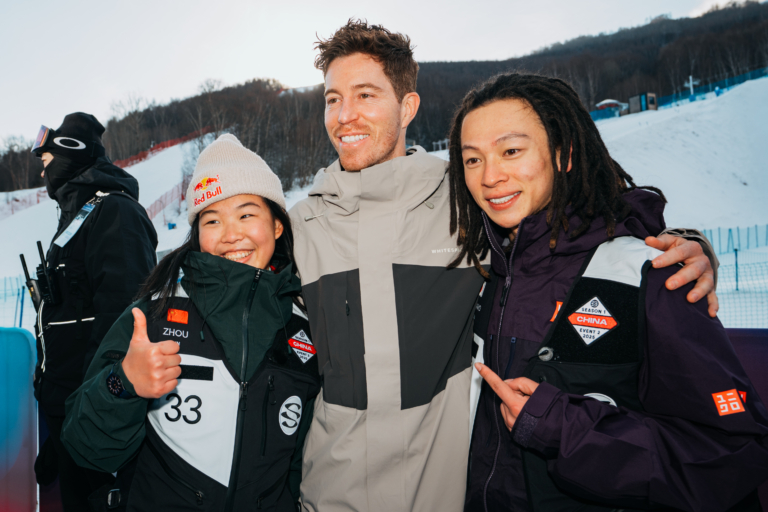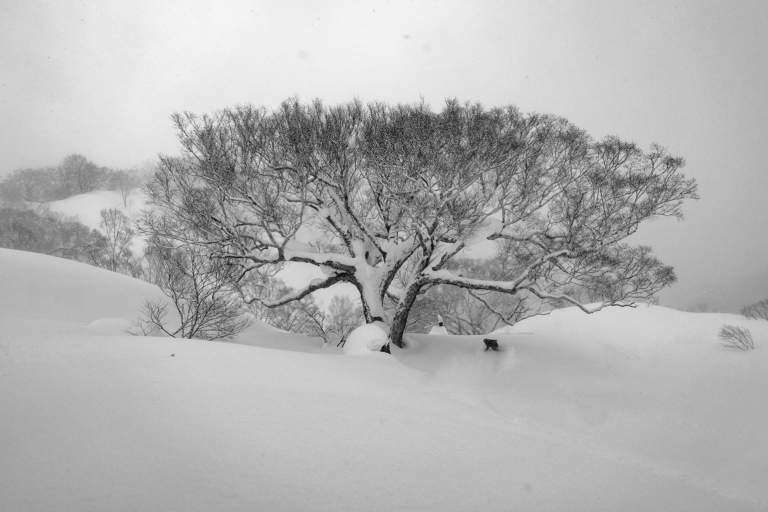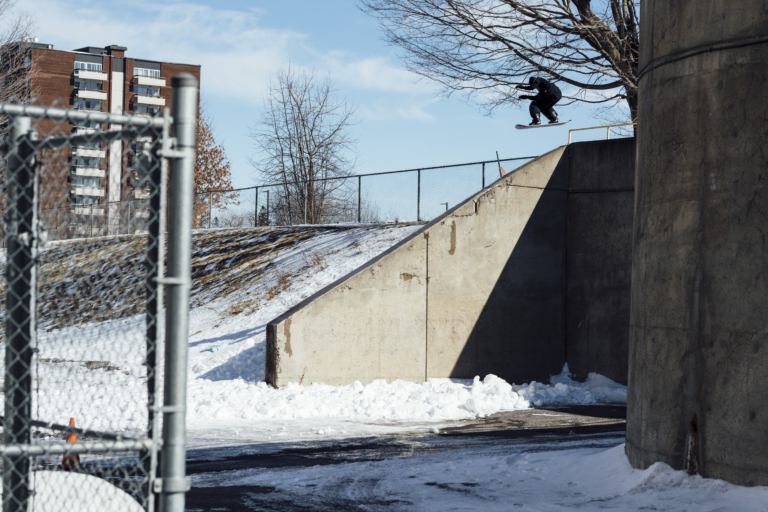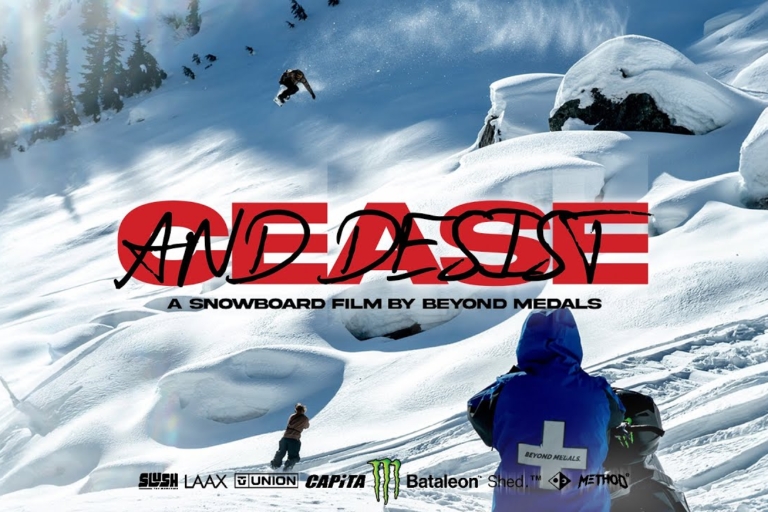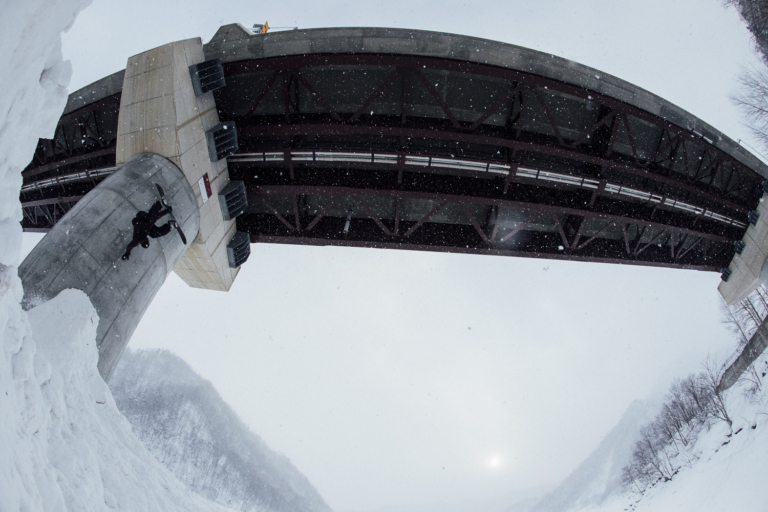It is with rising tides that conversations surrounding our climate crisis continue to gain popularity. The language of ecological integrity and justice has been absorbed by the layman, and despite those who continue to bark back in denial, it is something that the general population is confronted with more abruptly every year, and for snowboarders, every season. Fighting for environmental justice is something inherent to the Chilean snowboarder Rafael Pease. Rafa is a socio-environmental activist that splits his time between Alaska and Chile, documenting projects with his production company, Connections Movement. He approaches the sport with a deep-seated commitment to telling the untold stories of the land we move through as snowboarders while engaging in nearby communities with passion and authenticity. With two new films out this year, Rafael and his team at Connections Movement have been working hard to release both SOMOS and Tupungato: Empathy in Death and tell their respective and impactful stories. Rafa tapped in from Chile this fall to catch us up on what’s new for Connections Movement. – Ally Watson

Hey Rafa, how’s it going? Where are you right now?
Hey Ally, I’m in Chile right now. I live between Chile and Alaska, I do spring and winters here and spring and winters in Alaska.
You’re originally from Chile?
Yeah, my mom is Chilean and my mom’s entire side of the family is from Chile. My dad is Cuban and his entire side of the family is from Cuba. I was born in France, but left when I was very young.
When did you start splitting your time between Chile and the US?
I grew up in Chile and then I moved to the USA when I was around 11 years old. My parents were divorced, and my dad was living in Miami and my mom in Chile. So, I went to live in Miami then Texas and Colorado, where I spent my first season snowboarding.
Where did you start snowboarding?
In Chile when I was around 17-18 years old. My Chilean side of the family are skiers, but they like skiing when the weather is nice and the après is nicer. I started snowboarding here and moved to Colorado in 2013 to go to the university, where I spent about five years on and off, studying and working on film projects. Later on, I moved to Montana for about a year-and-a-half and eventually ended up in Alaska about a year-and-a-half ago.
What part of Alaska are you in?
I live in Girdwood. A small town with good people and amazing mountains.
What did you study in university?
I studied environmental sciences and geology.
So that influences what you’re doing now?
Yeah, it definitely gave me the tools and knowledge to better understand the environmental crisis we are facing, mixing it with filmmaking and my privilege of being able to be in the mountains where I get to see things from a unique perspective, to pass forward what I learned to others.
When I first started snowboarding, I didn’t even know there were snowboard movies or anything like that. I only really knew the Olympics, but I was never a fan. Then I saw that there were films from production companies like Warren Miller, TGR, etc…and that inspired me to do things a bit different—to mix cultural realities with such an elite sport and add the environmental aspects of it to make it multi-faceted. To make it meaningful.

Tell us about your production company, Connections Movement.
I started Connections Movement in 2015 as a grassroots production company, while I was a sophomore at the University of Colorado. I’m still learning a lot about filmmaking, it’s like anything in life, you make a mistake, and you intend to learn from it. It’s similar to being in the mountains, everything is constantly changing and evolving.
So, you have two projects coming out, Tupungato, which has been in the works for a few years, and SOMOS. What differentiates them as standalone films?
Right now, we are finishing, Tupungato: Empathy in Death, which is a feature-length film that we filmed from 2019-2022. It started with this obsession of conserving this great area near my home in Chile, with the hopes of creating a national park for the endemic species of the area and the people who haven’t had the privilege to go into nature. Where all the mountains are privatized and owned by the multi-national elite, there are all these factors involved in the film that present the answer of why we are in the position we are in today, politically, socially, and environmentally.

I wanted to ask you how you prioritize your connection with communities and the land you are on when you are on expeditions, because that shines through in your previous releases.
It’s not something I go seeking as tick mark for my community involvement of the year, it’s something that has been a part of me since I was a child. As someone who is categorized as “marginalized” here in the USA, I always try to uplift everyone within those communities, treat them how I want to be treated, and give them any possible opportunity I can.
I do have the privilege of having a lot of great sponsors that support me. I pass on my gear to communities and whoever needs it. I have a lot of people reaching out to me from the USA or South America and Hispanic organizations to participate in giving talks or hanging out with kids or taking people into the mountains. I always say yes. It’s with the right intentions. It’s authentic. I don’t parade it, like showing these altruistic things. I hope people are doing things for the right reason.
Yeah, there’s always an element of tokenism and performativity at play. So, you see people, brands or production and marketing ticking a box thinking it’s the right thing to do. You worked on a film with TGR that was released last year, how did that go?
Anytime someone invites you on an expedition, it’s an enormous privilege. So, pretty much they hit me up and asked me if I wanted to be involved in the film Mountain Revelations. It was at the latter end of the BLM protests, so I was a bit hesitant if the intentions were authentic or if it was an element of tokenism. Regardless, I agreed. It was a good opportunity at the time for me as an athlete, and I’ve never been to Alaska before, so why not. And for that I am eternally thankful. Plus, to a certain degree it was a huge opportunity to show the outdoor community that BIPOC athletes can hang with Jeremy Jones on a big mountain expedition. And Jeremy Jones is a rad mountain dude who shared his Alaska wisdom with me.
I’m a little bit bitter on the distribution side of the film because my intentions in participating were that if I was going to be in a film about diversity, representation, and inclusivity, it should not be behind a paywall. The film was put behind an expensive paywall of about $100 (not sure if price has changed) which prevents marginalized communities from seeing it. It was important for me to have it be put out for free or on a more accessible platform so that the entire purpose of the film could be completed.
With your company Connections Movement, you’re calling the shots and ensuring opportunities for others. Who was on the SOMOS expedition?
On the expedition there were six people. Myself, Iñaki, Jana Rogers (photographer/drone), Nick Cahill (cinematographer), Taylor Loughran (cinematographer), and Jesse Levine (photographer). Beyond that there was my entire post-production team in Chile.
What inspired the narrative theme in the film?
I find my inspiration in nature and giving a voice to those who don’t typically have one or the opportunity to be heard.
Do you have anything in the works for the upcoming season?
I am planning on spending as much time in the mountains as I possibly can, as well as giving back to the local communities. I might put together a short film this winter in Alaska, too.
What’s next for Connections Movement?
The plan is to keep slowly making meaningful documentaries. As of right now, find a way to get the most amount of eyes as possible on SOMOS and Tupungato. Further than that, we have been working on two other documentaries that we hope to be filming in the second half of 2023. One step at a time.

